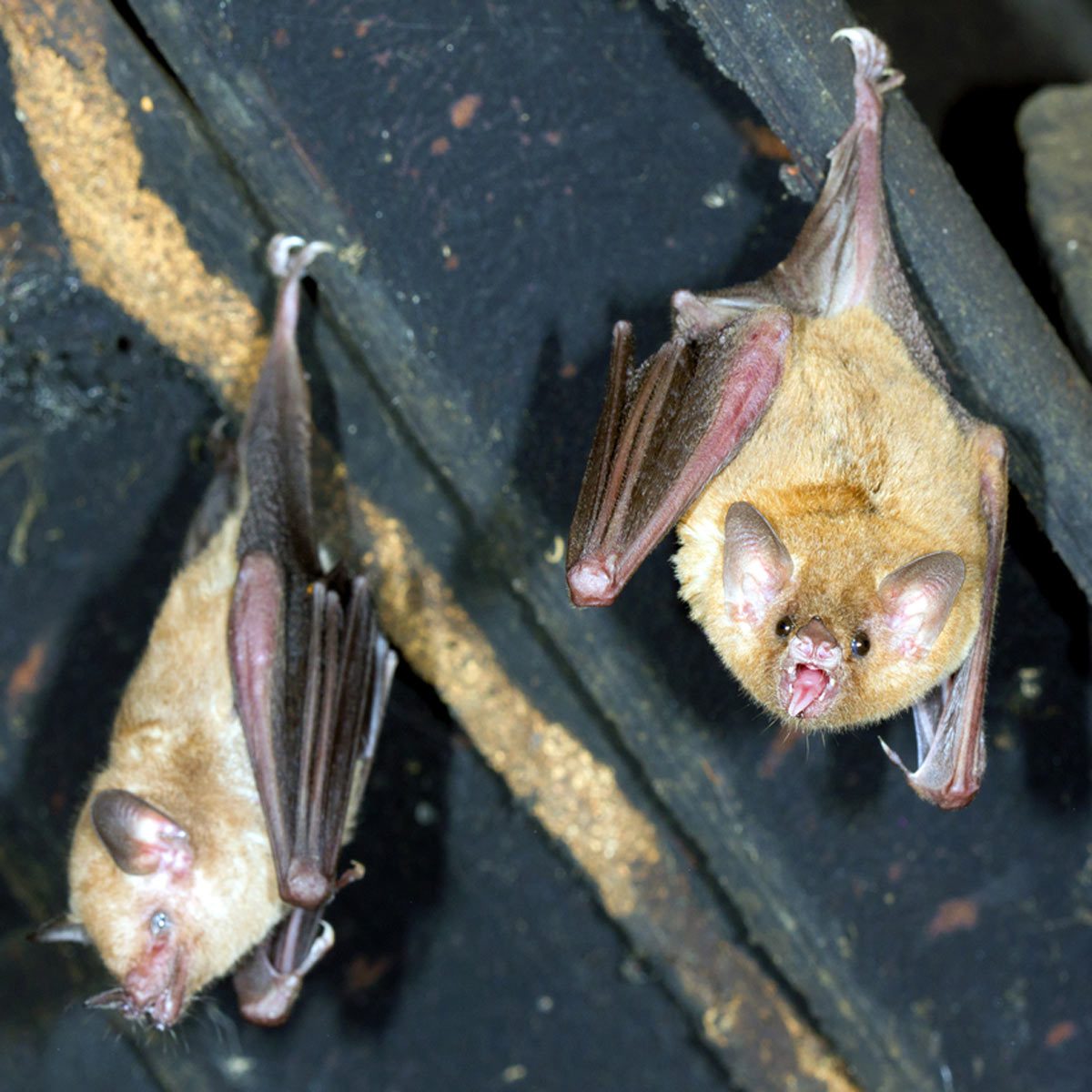How to Get Rid of Bats in Your Attic

There are a lot of creatures you don’t want in your home—termites, snakes, rats and bats, for example. While some can do more damage than others, some also do a lot of good! Bats, kept at a proper distance, can be very beneficial neighbors. In fact, according to Bat Conservation International, bats consume about 1,200 mosquito-sized insects an hour, and some species disperse seeds, pollinate plants and feed on beetles that destroy crops.
However, as with many creatures, there’s a benefit of having them near, but not in, your home. If you have a colony of these creatures in your attic, you’ll want to act fast. Their droppings can cause structural damage, create a bad odor and even grow fungus which can cause respiratory problems.
How will you know you have bats in your attic, other than actually seeing them? You’ll notice bats have made their way into your attic thanks to the smell of their guano or urine, which are extremely pungent.You may also hear them in early dawn and dusk hours.
How to Get Rid of Bats
The first thing you should know about how to get rid of bats is that they cannot be removed with poison. In most states, it’s actually illegal to poison bats because of their contribution to the ecosystem.
Female bats seek dark, enclosed areas that resemble caves for raising their pups when their natural habitats become overpopulated. Attics make a great alternative home. Because the pups are born anywhere from late April to early June, bat removal cannot occur during the summer, since the pups cannot fly.
How to Remove Bats from Attic
To get them out, identify their entry and exit points, making sure not to seal them while the bats are inside. Killing them is both inhumane and will create an unlivable environment due to the smell of a colony of decaying bats.
Bats will hibernate in the winter if the temperature stays at around 35 to 40° F. If it gets colder than that, the bats in the attic will migrate out, allowing you to seal up cracks and other entry points once they leave for the season. If you live in an area with mild temperatures throughout the year, the bats will stay year-round. In this case, find the entry points, which are often marked with an accumulation of guano or urine stains. You’ll then want to use exclusion doors and traps to allow the bats to get out.
One type of exclusion door is a piece of netting that hangs a foot below the bats’ exit point. You tape the netting along the top and sides but leave the bottom free. You can also purchase wire exclusion doors.
Learn more about exclusion doors and other DIY pest control options.
Excluders are boxes that allow the bats to exit the roost but block off the return route. The BAT CONE® Excluder is a great option. It’s 6-inches long and has four flexible tabs at one end to attach the excluder over the bats entry/exit point. It can be attached using pushpins, staples or duct-tape, and it’s completely reusable. For optimal results, you’ll want to mount the excluder with a downward angle. Once all the bats are out, each excluder should be removed and each entry point tightly sealed.
Bats can also get in through torn window screens. Here’s how to fix them.
Once the house is properly protected from a new bat colony, the cleanup work begins. You’ll want to thoroughly examine your attic, removing all traces of guano, urine or hair. Their droppings can cause health risks due to the resulting mold, so be sure to use protective gear and a respirator.
If you find yourself up against a massive colony of bats in your attic, you may want to contact a wildlife removal expert to help with exclusion doors and traps, as well as proper sealing and cleaning.
If you don’t have bats in your attic, here’s how to keep it that way!
Check out these insane pest control ideas.
No comments